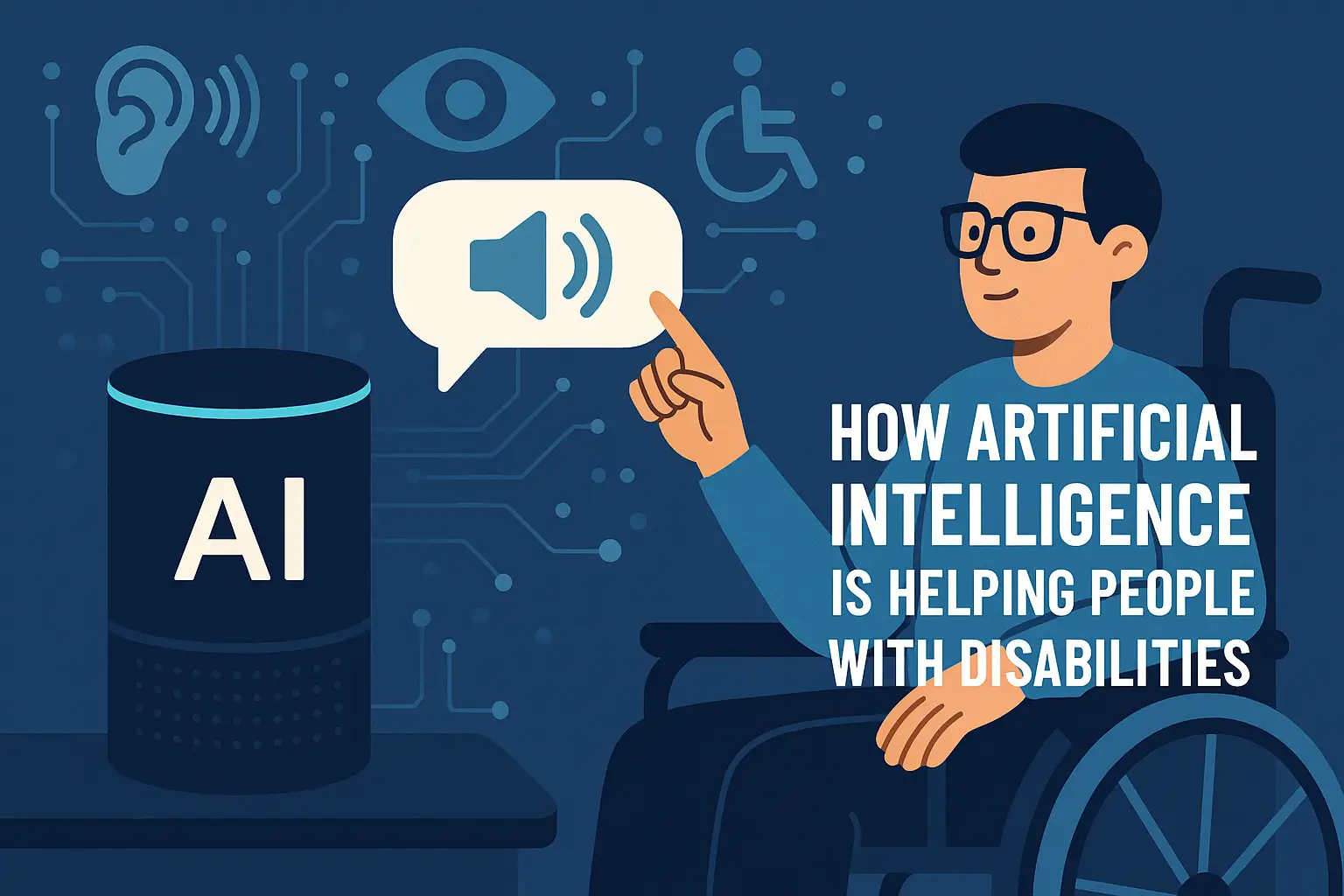Artificial Intelligence (AI) is transforming lives by creating new opportunities for inclusion and independence—especially for people with disabilities. From visual recognition tools to smart assistants and mobility aids, AI is breaking down barriers and empowering individuals to engage more fully with the world.
This article explores how AI is supporting people with various types of disabilities and making society more accessible and equitable.
AI for Visual Impairments
1. Object Recognition and Scene Description
AI-powered apps like Seeing AI and Be My Eyes use computer vision to:
- Identify objects and read text aloud
- Recognize faces and describe surroundings
- Interpret colors, barcodes, and currency
These tools allow visually impaired users to navigate spaces and interact with objects more independently.
2. Navigation and Wayfinding
AI supports mobility through:
- GPS-based applications with voice guidance
- Smart canes with obstacle detection and alerts
- Indoor navigation in public buildings using beacons and computer vision
This improves safety and autonomy in unfamiliar environments.
AI for Hearing Impairments
1. Real-Time Captioning and Transcription
AI systems like Google Live Transcribe and Microsoft Teams provide instant captions for:
- Conversations and meetings
- Lectures and live events
- Video calls and content
This enhances participation and communication in both personal and professional settings.
2. Sign Language Recognition
AI models are being developed to:
- Translate sign language into text or speech
- Allow non-signers to understand deaf users
- Enable inclusive communication in real-time scenarios
This bridges the gap between sign language users and the broader community.
AI for Cognitive and Learning Disabilities
AI tools help users with conditions like dyslexia, ADHD, and autism by:
1. Personalized Learning Platforms
Apps like Grammarly and Glean offer:
- Reading assistance and simplified explanations
- Study aids and visual summaries
- Adaptive pacing and repetition
These platforms support different learning styles and help users stay focused and organized.
2. Predictive Text and Communication Aids
AI enhances communication with:
- Predictive keyboards and phrase suggestions
- Augmentative and alternative communication (AAC) devices
- Visual storytelling tools for non-verbal users
These innovations promote independence and self-expression.
AI for Mobility Impairments
1. Voice Control and Smart Home Integration
AI-powered voice assistants (like Alexa, Google Assistant, or Siri) enable users to:
- Control lights, appliances, and thermostats
- Access information hands-free
- Send messages and make calls
- Set reminders and manage schedules
This provides autonomy in daily activities and reduces dependence on caregivers.
2. Autonomous Wheelchairs and Navigation Systems
AI-driven wheelchairs can:
- Detect obstacles and plan routes
- Respond to voice or eye-gaze commands
- Map environments for smoother movement
This restores mobility and expands access to public spaces.
AI in Mental Health Support
AI is making strides in mental health care with:
- Virtual therapy chatbots like Woebot and Wysa
- Emotion tracking and mood analysis
- Personalized mental wellness recommendations
- Crisis detection based on user behavior or language
These tools offer support between therapy sessions or in areas where traditional care is limited.
Benefits of AI for People With Disabilities
1. Greater Independence
AI allows individuals to perform tasks without needing constant assistance.
2. Enhanced Communication
Speech, text, and visual tools empower users to express themselves clearly and confidently.
3. Personalized Experiences
AI adapts to individual needs and preferences, improving user experience.
4. Increased Access
AI makes education, employment, and public life more accessible to everyone.
5. Empowerment
Technology gives users control over their environments and decisions.
Challenges and Ethical Considerations
Despite its promise, AI for disability inclusion faces hurdles:
1. Affordability and Access
Advanced tools can be expensive and not available in all regions or languages.
2. Data Privacy
AI systems process sensitive personal data, requiring strong protections and ethical handling.
3. Design Bias
If not developed with input from people with disabilities, AI tools may fall short or create new barriers.
4. Reliability
AI systems must be dependable, especially in critical situations like navigation or health monitoring.
5. Awareness and Adoption
Many users and organizations are still unaware of available AI tools or how to implement them effectively.
The Role of Inclusive Design
To maximize impact, developers must embrace inclusive design principles by:
- Involving people with disabilities in product development
- Testing tools in real-world scenarios
- Offering customizable settings for diverse needs
- Ensuring compatibility with assistive devices
This ensures AI solutions are practical, respectful, and truly supportive.
Future Trends: Smarter Accessibility
Looking ahead, we can expect:
- Wearables that integrate AI for real-time assistance
- Emotion-aware AI to support social communication
- Brain-computer interfaces (BCIs) for thought-based control
- AI-enhanced prosthetics that adapt to user movement and intent
- Universal accessibility features embedded in mainstream platforms
These innovations promise to make inclusion the norm, not the exception.
Final Thoughts: Building a More Inclusive Future
Artificial Intelligence holds immense potential to improve the lives of people with disabilities. But true empowerment comes when technology is designed with empathy, ethics, and collaboration.
By prioritizing accessibility and involving diverse voices in innovation, we can harness AI not just to level the playing field—but to create a society where everyone can thrive.
